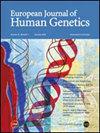瑞典遗传性tp53相关癌症综合征的特征——对90个家庭基因型-表型相关性的全国性研究
IF 3.7
2区 生物学
Q2 BIOCHEMISTRY & MOLECULAR BIOLOGY
引用次数: 0
摘要
我们的目的是描述瑞典遗传性TP53相关癌症(hTP53rc)综合征4类和5类种系TP53变异体(gTP53)家族的临床特征,并评估基因型-表型相关性。这些结果也用于评估我们之前发表的基于TP53错义变异的表型预测模型及其对蛋白质构象的影响。最初在瑞典发现了90个hTP53rc家庭。在使用TP53特异性ACMG标准进行变异重新分类后,仍有83个家族(176名携带者)携带TP53致病性(5类)或可能致病性(4类)变异。其中,112名携带者(64%)有癌症病史,35名携带者(31%)有一个以上的原发肿瘤。16%的家庭符合更严格的经典Li-Fraumeni综合征标准,45%符合更新的Chompret标准,35%符合遗传性乳腺癌(HBC),其余5%被归类为“其他”。我们鉴定了42种不同的gTP53变体,其中22种是错义的。最常观察到的变异是错义c.542 G > A, p.R181H,在14/29(48%)的HBC家族中发现。使用我们之前发表的计算机预测模型,20个信息性错义变体中的15个(75%)在表型上得到了正确的预测。TP53 p.R181H被确定为一种常见的瑞典变体,主要与HBC表型相关。除该变异外,没有显著的基因型-表型相关性。因此,由于表型重叠,对不同的tp53携带者进行分层监测还为时过早。本文章由计算机程序翻译,如有差异,请以英文原文为准。

Characterisation of heritable TP53-related cancer syndrome in Sweden—a nationwide study of genotype-phenotype correlations in 90 families
We aimed to describe the clinical characteristics of families with heritable TP53-related cancer (hTP53rc) syndrome in Sweden with class 4 and 5 germline TP53 variants (gTP53), and to evaluate the genotype-phenotype correlation. These results were also used to evaluate our previously published phenotype prediction model based on TP53 missense variants and their impact on protein conformation. 90 families with hTP53rc were initially identified in Sweden. After variant reclassification using the TP53-specific ACMG criteria, 83 families remained (176 carriers) to harbour a pathogenic (class 5) or likely pathogenic (class 4) variant in TP53. Of these, 112 carriers (64%) had a previous history of cancer, and 35 (31%) had developed more than one primary tumour. 16% of the families met the stricter criteria for Classic Li-Fraumeni syndrome, 45% the updated Chompret criteria, 35% for hereditary breast cancer (HBC), and the remaining 5% were classified as “Others”. We identified 42 different gTP53 variants of which 22 were missense. The most frequently observed variant was the missense c.542 G > A, p.R181H identified in 14/29 (48%) of HBC families. Fifteen of the 20 informative missense variants (75%) were phenotypically predicted correctly using our previously published in silico prediction model. The TP53 p.R181H was identified as a common Swedish variant predominantly associated with an HBC phenotype. Apart from this variant, there were no significant genotype-phenotype correlations. Therefore, due to phenotypic overlap it is still too early to stratify surveillance programme for different TP53-carriers.
求助全文
通过发布文献求助,成功后即可免费获取论文全文。
去求助
来源期刊

European Journal of Human Genetics
生物-生化与分子生物学
CiteScore
9.90
自引率
5.80%
发文量
216
审稿时长
2 months
期刊介绍:
The European Journal of Human Genetics is the official journal of the European Society of Human Genetics, publishing high-quality, original research papers, short reports and reviews in the rapidly expanding field of human genetics and genomics. It covers molecular, clinical and cytogenetics, interfacing between advanced biomedical research and the clinician, and bridging the great diversity of facilities, resources and viewpoints in the genetics community.
Key areas include:
-Monogenic and multifactorial disorders
-Development and malformation
-Hereditary cancer
-Medical Genomics
-Gene mapping and functional studies
-Genotype-phenotype correlations
-Genetic variation and genome diversity
-Statistical and computational genetics
-Bioinformatics
-Advances in diagnostics
-Therapy and prevention
-Animal models
-Genetic services
-Community genetics
 求助内容:
求助内容: 应助结果提醒方式:
应助结果提醒方式:


